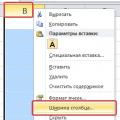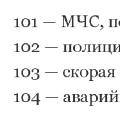Windows 10 does not allow you to format external USB drives larger than 32 GB to the FAT32 file system. The format utility dialog only offers NTFS and exFAT file systems for USB drives larger than 32GB.
While NTFS is considered the preferred file system of Windows 10, users who frequently need to use their external USB drives with other operating systems such as macOS and Linux may want to format their USB drives to FAT32 for compatibility reasons. As you probably know, macOS does not fully support the NTFS file system, but it can both read and write to FAT32.
Before I talk about how to format a USB drive with the FAT32 file system, I would like to remind you that FAT32 does not support files larger than 4 GB. That is, if the file size exceeds 4 GB, it cannot be transferred to FAT32 drives.
Since the utility Windows formatting 10 does not allow us to format USB drives larger than 32GB to FAT32 file system, we need to either use a command line utility or use a third party tool to format the USB drive to FAT32.
How to format a flash drive to FAT32 on the command line
Please note that formatting large USB drives to FAT32 may take several hours. If you can't wait for hours, use the tool mentioned in method 2 of this guide.
IMPORTANT: Formatting the drive will delete all data on the drive. Please do backup copy all data elsewhere before continuing. If you want to convert your drive from NTFS to FAT32 without losing data, use the tool mentioned in the last chapter.
- Open Command Prompt as Administrator. To do this, type CMD into the Start/Taskbar search box, right-click Command Prompt, and select Run as Administrator. Click Yes when the User Account Control screen opens.
- In a command prompt window, run the following command:
Format /FS:FAT32 X:
In the command, replace the "X" with the drive letter of the USB drive you want to format as FAT32. As already mentioned, formatting the disk can take several hours. Press Enter when asked to run the command.
How to format a flash drive to FAT32 with FAT32 Format
If you don't want to use the command line, you can download this free utility to format USB drives larger than 32GB to FAT32.
- Download and run the FAT32 Format utility.
- Select USB drive, select the “Quick Format” option and to begin formatting the drive to the FAT32 file system, click the “Start” button. All data on the disk will be deleted.
All third party partition management tools support formatting a 32GB+ drive to FAT32 file system. You can use any of them.
How to Convert NTFS to FAT32 without Data Loss
There are quite a lot third party utilities that will help you transform NTFS drives to FAT32 without data loss, but they are not free!
Although there are several free utilities, they only support small USB drives. Partition Wizard, Partition Wizard and AOMEI NTFS to FAT32 Converter allow you to convert NTFS drives to FAT32 without losing data, but none of them are free!
Windows has a conversion utility, but it can only convert FAT32 to NTFS, not the other way around! Therefore, if you need to convert NTFS drives to FAT32 without losing data, it would be advisable to do backup data to another location and manually format the USB drive to FAT32, rather than buying a third-party program for a one-time job.
Let us know if you know about free program, which (without any restrictions) can convert NTFS to FAT32 without data loss.
In this instruction I want to tell you how to format HDD or a flash drive in FAT32 in the operating room Windows system 10. The point is that in the usual way, you won’t be able to do this through “My Computer” - such a file system will not be in the list of available ones, since Microsoft considered it completely outdated and irrelevant. But despite this, FAT32 is still considered the most optimal for use with mobile devices. This is the best option if you want to connect a flash drive to a phone or tablet, or connect it to a gadget external hard disk and dump the necessary information onto it.
There are three ways to format a disk to FAT32 on Windows. Let's look at each of them in detail.
Windows 10 Disk Manager
The first method, quite simple and understandable even for those who are not particularly experienced, is to use the Disk Manager. To start it, press the key combination Win+R and enter the command diskmgmt.msc and click the “OK” button.
The Disk Management window will open. At the bottom of the window, the physical disks connected to the computer are listed one by one. We find our flash drive or external hard drive there. In my example this is drive J.
Important! Don't make the wrong choice of disk. Check again by letter and volume! If you choose the wrong one, delete the data from another drive and it will be very unpleasant!
Right-click on it and select “Format”.
The following window will appear:
In the “File system” list, select FAT32 to format the flash drive in this file system. Click "OK" and wait for the process to complete.
Format disk via command line
The second way to format a removable drive in FAT32 is to use console utility format, which is in all Windows versions. To use it, click the start button and enter the phrase command line. The search results will display a link to the console. Alternatively, you can press the Win+R key combination and enter the command cmd and click on the “OK” button.
In the black console window that opens, enter a command like this:
Format<буква_диска_носителя>: /FS:FAT32
After that, press the Enter button and wait for the process to complete. In my case, the command that allows you to format a flash drive (of any size, at least 2 GB, at least 64 GB) or a disk in FAT32 looks like this:
Attention: Before starting the disk format, make sure once again that you have specified the correct volume letter. If you make a mistake and enter a different letter by mistake, another disk will be formatted and you will lose all data on it.
Program for formatting a flash drive
Well, the third way is to use non-built-in Windows tools, A third party programs to format a flash drive. There are a huge number of them on the Internet. For my part, I will recommend a simple free utility FAT32Format. You can download it
After using any of the above methods, you can easily connect the flash drive to your phone or tablet and work with it. Good luck!
Good afternoon Instructions below.
A little explanation: Standard tools for formatting disks in the operating room Microsoft system Windows does not offer formatting large flash drives and memory cards in FAT32. It is believed that FAT32 is outdated, but, nevertheless, it is FAT32 that can read the radios of many cars. To format in FAT32 we will use very a simple program from third party developers.
We format a flash drive of any size in FAT32
1. Download and install the GUIFORMAT32 program( , checked for viruses and malware).
3.Select a flash drive from the list(if there is only one, it will be selected automatically).
4. Specify the desired name of the flash drive(this item is optional).
5. Click the "Start" button and wait for the process to complete.
Now your flash drive is formatted in FAT32, you can record music on it and listen to it in the car, there will be no more problems with reading such a flash drive in the radio. This method works for flash drives and memory cards of any size.
If the formatting process fails, then you need to check your flash drive or memory card for errors and actual size:
1. In order to check whether the actual size of the flash drive matches the stated one, use our instructions: .
2. In order to check a flash drive or memory card for errors, follow our instructions: .
If you have any questions or need clarification, please ask a question or leave a comment.
Modern flash drives and external SSD drives with a capacity of more than 64 GB can be connected to a smartphone and tablet. This makes it possible to back up captured photos on them on the road or watch movies from them. But it must be formatted in Fat32.
Because Windows 10 doesn't allow you to do this standard means(the screenshot shows that the disk can only be formatted in NTFS or exFat), CHIP will tell you how to solve this problem with a small free utility.
Insert a flash drive or external drive into USB port computer, open Explorer (usually it opens immediately after connecting the drive) and see what letter the connected drive has. 
Attention! The formatting operation in Fat32 will delete everything recorded on the flash drive ( external drive) files. Make sure that there are no files you need on it, and if there are, copy them to the internal drive of the computer or other media.
 Download a small utility guiformat.exe from this site (there is a link to the official site). Open the folder with the downloaded program and double-click it to run. In the program window, select the media that you plan to format in Fat32, give it a name in the Volume Label field and click Start, then confirm your intention to delete all data from this disk by clicking “Ok”.
Download a small utility guiformat.exe from this site (there is a link to the official site). Open the folder with the downloaded program and double-click it to run. In the program window, select the media that you plan to format in Fat32, give it a name in the Volume Label field and click Start, then confirm your intention to delete all data from this disk by clicking “Ok”.
 If you selected the quick format mode, then in a couple of seconds your drive will receive the Fat32 file system. Now you can safely connect it to your smartphone or tablet via an OTG adapter. If you don’t have it yet, then you can take a closer look, for example, at this one for about 100 rubles.
If you selected the quick format mode, then in a couple of seconds your drive will receive the Fat32 file system. Now you can safely connect it to your smartphone or tablet via an OTG adapter. If you don’t have it yet, then you can take a closer look, for example, at this one for about 100 rubles.
In addition, universal flash drives with USB 3.0, microUSB and USB Type-C interfaces have already appeared on sale, for example, Silicon Power Mobile C50 32GB.
For command line lovers
Using the link above, you can also download from the manufacturer’s website the original fat32format.exe utility for quickly formatting disks, but without a graphical shell. To run it you will need to activate the command line Windows string by pressing Win+R and entering in the field cmd commands, and then confirming with the Enter key.
In the command line window, go to the folder where the utility was downloaded by entering the command to go to disk and then the path on the disk where the program is located. For example,
CD \My Works\For iCHIP\Format to Fat32\fat32format\
 An example path is provided here. Copy your path to the file from the address bar of Explorer. Then enter the command to format your external drive by typing in command line:
An example path is provided here. Copy your path to the file from the address bar of Explorer. Then enter the command to format your external drive by typing in command line:
fat32format F
where F is the letter of the media that should be formatted. The maximum storage capacity supported by the program is 2 TB.
When formatting a flash drive, you can select the file system: NTFS or FAT32. File System(FS) is a way of recording and storing data on external storage. Its choice determines how the media will work, how much everything will fit on it, and what devices will be able to read and record information. But the main difference is the maximum size of the stored file. These FS have different characteristics and different purposes. You need to decide in advance what the drive will be used for. Figure out how to format a flash drive in NTFS or FAT32, what advantages each file system provides, and under what conditions it will be useful. Even if you do not have a specific range of tasks for a USB drive, it makes sense to learn more about the File System.
One of the characteristics of FS is the cluster size. This is a kind of “sector” on a flash drive. Imagine that you see a field divided into cells. If you put data in one of them, nothing else will be written there. Even if they haven't completely filled the sector.
To choose NTFS or FAT32 for a flash drive, you need to understand specific example. Let's say the cluster size is 16 Kilobytes. If you copy a file that weighs 8 Kilobytes onto the media, it will occupy the entire “cell”. And the next data will be recorded in other sectors. If you move a document to 18 Kilobytes, it will get two clusters. And you won’t be able to add anything to them. And 14 KB of free space will be wasted. Accordingly, the smaller the cell, the more data will fit on the drive.
Before formatting a flash drive in FAT32 or NTFS, look at their minimum cluster size. It depends not only on the file system, but also on the characteristics of the drive. This value can be manually selected during cleaning.
In most cases, the difference between sectors in FS is small. But in FAT32, changing the cluster significantly affects performance. This File System works much more efficiently with large “cells”. For NTFS, the optimal sector size is 4 KB. For FAT32 - 8 or 16 KB. But you can choose other options.

FAT32 runs smoothly on computers that have little RAM. This FS is suitable for you if you want to move small files and folders to the drive. With a low percentage of fragmentation, the file system works quickly. It is compatible with many devices: cameras, TVs, set-top boxes, players, printers. Data from the media will be available on any gadget.
If you are wondering how to format a flash drive in FAT32, it makes sense to learn about the limitations. Files larger than 4 GB will simply not be written there. A message will appear indicating that the disk is full. If you plan to store high quality movies on it, this FS is not the best option. If you transfer photos or documents on it, choose FAT32.
There are no such “obstacles” in NTFS. Maximum size files is limited only by storage capacity. Memory is rationally distributed in this File System. Work with multi-level catalogs containing a lot of data is effectively organized.
Formatting
In order for formatting a flash drive to FAT32 or NTFS to be successful, it must be optimized.
- Insert the drive into the USB slot.
- Wait until the system detects the presence of a new device and finds a driver for it.
- Open My Computer. It should be on the desktop or in the Start menu.
- There will be a list of disks and connected devices.
- Right-click on the media.
- “Properties” item.
- Hardware tab.
- Select the media.
- "Properties" button.

Click on Properties
- Section "Politics".
- Select Optimize for Execution. If the required option is not there, then optimization is not required.
- Confirm the action.
After this, you can figure out how to format a flash drive in FAT32 and NTFS.
- Open My Computer.
- Right-click on the drive you want to clean.
- To see what File System is on it, open “Properties”. The “General” tab will contain the necessary information.
- Right-click on the flash drive again.
- “Format” item.

Click format
- From the File System drop-down list, select NTFS or FAT32. There may be other FS: “FAT” (without numbers), “exFAT”.
- In the "Cluster Size" section, specify the desired cluster size accordingly. The minimum value differs in different File Systems.
- You can uncheck the “Quick” checkbox to ensure deep cleaning of the volume.
- Click "Get Started."
- The process will take some time. Do not interrupt it or turn off your PC.
Through settings
- Right-click on the “My Computer” icon.
- Item "Management".
- Expand the "Storage Devices" list. He's on the left.
- Sub-item "Disk Management".

Disk management
- In the menu that appears, right-click on the drive.
- “Format” item.
- Further actions are the same as in the previous chapter.
Don't touch anything else when operating your computer. If you accidentally change the primary drive or volume letter, problems will arise.
Programs
Formatting a flash drive into NTFS or FAT32 using utilities is practically no different from cleaning with built-in using Windows. But you need to search for, download and install third-party applications yourself. Here are some of them:

- HDD LOW Level Format Tool.
If you need to quickly copy small files, figure out how to format a flash drive in FAT32. This file system is suitable for small drives. If you plan to store objects on storage media that weigh 4 GB or more, you need NTFS.




